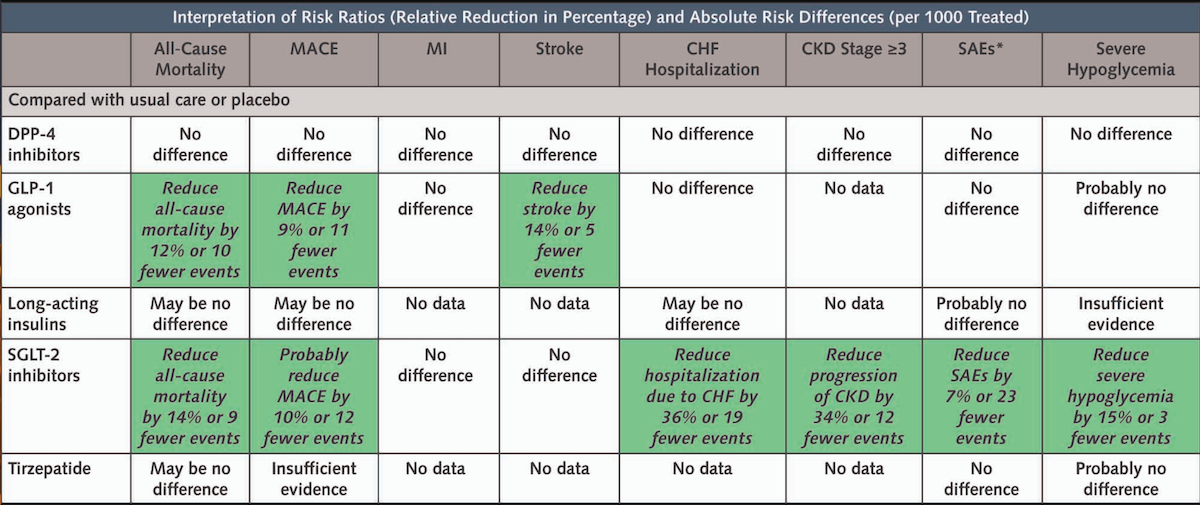Article
How to improve diabetes care
Author(s):
Primary care physicians sometimes struggle to effectively treat patients with diabetes.

Primary care physicians sometimes struggle to effectively treat patients with diabetes.
Almost half of patients with diabetes don’t meet their related goals, including A1C blood glucose levels, blood pressure, and LDL cholesterol levels, according to a study in the New England Journal of Medicine. That’s a problem in the U.S., where more than 30 million people are diagnosed with diabetes, accounting for $237 billion a year in medical costs.
The healthcare system is shifting to value-based medicine, notably through Medicare’s Merit-based Incentive Payment System (MIPS). That program rewards or punishes physicians financially, depending in part on their ability to meet quality metrics, including for patients with diabetes. Physicians are being measured on how they manage their patients’ A1C, blood pressure, LDL cholesterol, and smoking cessation, among others.
How can doctors motivate patients to adhere to treatment plans while meeting national quality metrics and maximizing reimbursement for diabetes care?
Giving patients responsibility
Given all the metrics to track, such as A1C levels, the healthcare system has made diabetes mostly about the numbers, says Randall Stafford, MD, Ph.D., an internist and director of the Program on Prevention Outcomes and Practices at Stanford Preventive Research Center, Palo Alto, Calif. But doing that diminishes patients’ ability to feel they’re contributing to their disease management. “If we continue to push for more attention on the numbers, it could backfire,” he says.
One way Stafford motivates his patients is by asking them to correlate how they’re feeling with what they’re doing for their own care, including diet, exercise, and blood sugar management.
“It seems like common sense, but we’ve lost track of that to some degree,” he says. “We drastically undersell behavior as a strategy in diabetes.” Behaviors are important links to what people can do to better manage their diabetes, he says.
Stafford avoids using the word “exercise” with patients, calling it “physical activity” instead.
“Many people view exercise as something that needs to be difficult and exhausting,” he explains. He defines physical activity as something that can be social, like dancing or walking with a spouse. He encourages patients to increase their activity level for a few weeks, and most will realize they feel better.
“If the physical activity can reinforce that correlation with how they feel, that leads to better engagement and better self-management,” he says.
Marc Price, DO, once used scare tactics with his patients, telling them stories of what would happen if they didn’t manage their A1C levels. “That didn’t seem to work,” says Price, a family practitioner in Malta, N.Y.
Now he uses motivational interviewing, asking patients questions to find out what might encourage them to take better care of their diabetes. A motivation might be improving mobility, so they can play more actively with their grandchildren, for example.
Price also finds it helpful to listen to patients’ struggles, as some share that they can’t afford to pay for medication and their living expenses. He’ll work with them to find less expensive medications, if possible, and his office provides information on finding cheaper diabetes supplies like testing strips.
He also explains to patients why they should be taking certain actions, even when they feel well. He may tell them to take their statin even if their cholesterol is normal, as diabetes causes life-long changes.
Lifestyle changes are the hardest for patients to make, so he encourages small ones. “We ask patients to lose 1 pound, not 50, and then we give a lot of feedback,” he says. He tells patients that even a small weight change will help their blood pressure glycemic control, and he tells them that weight change is mostly a result of dietary adjustment.
Time is essential
It takes time to find out what challenges patients experience while managing their diabetes, a problem further complicated by how brief the typical office visit is.
Time is the biggest factor in gaining patient trust so they’ll share this information, says Ashok Balasubramanyam, MD, an endocrinologist and professor of medicine at Baylor College of Medicine in Houston.
During visits with his patients who have diabetes, he asks numerous questions about neuropathic complications, sexual dysfunction, depression, mood issues, and adherence. “I can’t think of any way other than making time and asking the questions,” he says.
Even though it takes time away from the patient/physician discussion during the visit, the easy part of improving care is measuring and recording the needed metrics. This is something a physician should be doing at every visit, and can be easily incorporated in the EHR, Balasubramanyam says.
“Diabetes isn’t one thing,” he says, and selecting treatments to recommend for each patient is something many endocrinologists strive for but aren’t always accomplishing. “If you treat everybody the same, you get a mixed bag of results that won’t make a difference,” he says.
Instead, he recommends risk stratification measures, using clinical analytical tools. For each measure, like controlling sugar or blood pressure, there are subgroups with evidence. To get to that level of sophisticated treatment, he recommends education. The American Diabetes Association sponsors good research, publications, and CME, he says.
In Price’s practice, staff members ensure that the patient is set up to receive annual eye exams, and the medical assistant periodically checks the charts to make sure the patients kept the appointment. If not, the chart is annotated and Price follows up with them at the next primary care visit. Patients with diabetes get their urine and thyroid checked yearly, and Price looks for the results when they come in.
Price recommends that his patients with well-controlled diabetes come for office visits at least twice a year, once for a full physical and once for a six-month check. If their diabetes is not well-controlled, he’ll ask them to come every three months, and if poorly controlled, every two to four weeks to check their sugars and adjust their medication.
Using a team-based approach
Using a team approach to diabetes care allows staff to spread the tasks around, Stafford says. “The physician may be in position of authority and seen as the captain of the team, but I don’t think the physician needs to do all the tasks.”
With limited time for visits, a team-based approach enables additional patient education and care, boosting reimbursement as well. “If the goal is an A1C below a certain threshold, it doesn’t matter if the physician, dietician, or community health worker is part of that process,” Stafford says. A team-based approach also allows the patient to get more attention to the social and psychological dimensions of the disease.
Endocrinology centers may be better equipped with healthcare extenders, but small offices can bring in specialists as well. Price has a diabetes educator come to the office once a month. Insurance is billed for these visits, as many of the patients have benefits that cover it. For those without insurance, Price’s office covers the cost.
The Oak Forest Health Center in Oak Forest, Ill. uses a team-based approach to diabetes care. Almost 25 percent of their patients are diagnosed with type 2 diabetes. The team schedules lab tests before visits, calls patients with pending lab orders, preps upcoming patient charts with A1C values, and conducts a daily huddle to share information before the day’s visits begin.
Patients complete self-directed goal sheets at each visit, discussing them with the physician, who logs and monitors goals. Newly diagnosed patients and those with A1C levels at nine or above, are referred for diabetes education and care management. The program has been successful in better controlling patients’ diabetes.





